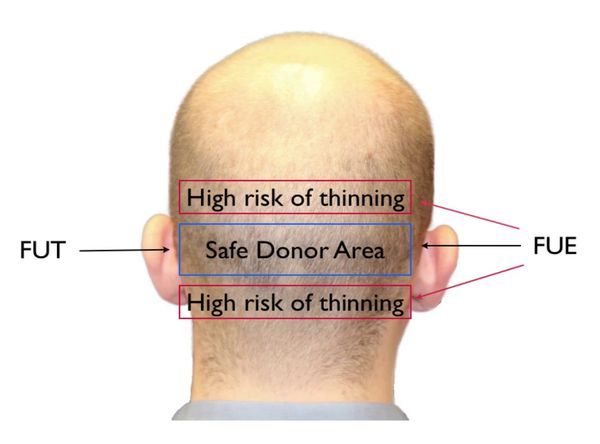Who is Eligible to Receive the Hair Transplant Procedure
The procedure of hair transplant is indeed an elective cosmetic surgery that requires a specific set of eligibility criteria in order to get the best aesthetic effect of the procedure. The hair transplant procedure is a sophisticated kind of cosmetic surgery which success depends upon the availability of the donor area as well the expert sense of the artistic skills and knowledge. It is very important to have the required set of needed criteria to receive the procedure; however, we must have an idea about the eligibility criteria to receive the procedure in the view of getting best results.
What is the Hair Transplant Procedure?
The hair transplant is a surgical restoration requires a donor area as well as the recipient part to receive the procedure in terms of implanting the grafts followed by the extraction of the same only from the donor part of the scalp. Therefore, it is a process of transferring the hair roots by taking the roots from the donor part which later transplanted into the receiving bald areas of the scalp. In this way, the procedure includes the process of hair root extraction, either by the FUT or through the FUE, dissection, and the final implantation of grafts to cover the respective balding area of the scalp.
The Role of Donor Area in the Hair Transplant:
Usually, the back and sides of the scalp are the safe areas to extract the hair roots as it contains the DHT-resistant hair roots that never fall out. The DHT-resistant roots don’t show the effect of miniaturization and remain forever on the scalp. However, it is primarily used to extract the hair roots that later transplanted into the balding part of the scalp.

Safe Donor Area
Now, we will enlighten the factors that are considered while planning the Hair Transplant Procedure:
Or’
Following are the Eligibility Criteria to receive the Hair Transplant Procedure:
- Diagnosis of Androgenic alopecia: It is mandatory that a patient seeking for the hair transplant must have the genetic baldness or the Androgenic alopecia. The procedure is required to cover the balding areas followed by the extraction of hair roots. The only treatment to sort out the issue of Androgenic alopecia is the surgical restoration of hair via the hair transplant.
- A Sufficient Hair loss that affects the Aesthetic outcome of the Procedure: It is mandatory that the patient has sufficient hair loss status that crucially needs the hair transplant procedure. If a person is affected by the genetic hair loss, but under the mature age means that he is underage and didn’t cross the age of 25, yet the procedure is allowed if the loss affects aesthetic appearance of a patient. However, the procedure can be allowed for a young patient if the hair loss perversely affects one’s looks and personality.
- The Adequate Donor Area to receive the Procedure: The patient must have adequate, safe donor part, i.e., the occipital and parietal part of the scalp in order to receive the best aesthetic result of the procedure. Usually, the safe donor area, i.e., the back and sides of the scalp need a particular age to attain the stability. Generally, the patients above the age of 25 possess a stable donor part with the best permanent hair roots and so the procedure is allowed after attaining the maturity stage. It is needed for the surgery that the DHT-resistant roots are being extracted and transplanted where it is needed to be transplanted.
- Realistic Expectations that can meet with the Surgical Hair Restoration: Everyone wants to look young and beautiful and the importance of hair cannot be ignored. First of all, it must be known that the restoration of hair is not a magic that gives you back everything because it depends on several other factors associated with the hair transplant procedure. The success of the procedure varies from patient to patient as every individual has a different state of baldness as well as the donor area condition that decides the overall success of the procedure. However, an expectation to receive the particular outcomes, not only dependent upon the surgeon’s expertise but also greatly influenced by the patients anatomical and physiological characteristics.
So, it is always good to receive the primary consultation with your hair transplant surgeon in order to find the information related to the present grade of baldness, available donor status as well as the anatomical and physiological characteristics of hair to receive the particular technique of the procedure. And, hence the success of the surgery is a combined effort of the surgeon’s expertise as well as the patient’s available eligibility criteria.